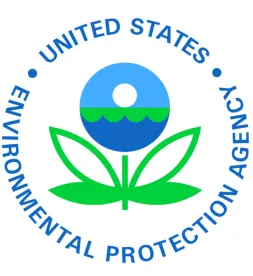On April 30, 2015, the U.S. Environmental Protection Agency (“EPA”) issued a direct final rule that will allow the rescission of Clean Air Act Prevention of Significant Deterioration (“PSD”) permits issued by EPA or delegated state and local permitting authorities under Step 2 of the Greenhouse Gas Tailoring Rule. The rule, published at 80 Fed. Reg. 26,183(May 7, 2015), is necessary to implement the decision last year in Utility Air Regulatory Group v. EPA, 134 S. Ct. 2427 (2014) (“UARG”) where the U.S. Supreme Court held that EPA may not rely on greenhouse gases (“GHG”) alone when determining whether a new source (or modification of an existing source) is required to obtain a PSD preconstruction permit or title V operating permit. Sources where GHGs alone triggered PSD requirements were known as “Step 2” sources, because they were covered under Step 2 of EPA’s Tailoring Rule.
The direct final rule does not rescind any EPA-issued Step 2 permits, but provides a regulatory mechanism for EPA and delegated state and local permitting authorities eventually to rescind them. Currently, 40 C.F.R. 52.21(w), which provides authority for a source holding a PSD permit to seek rescission of a PSD permit, is limited to permits issued on or before July 30, 1987. Because any EPA-issued Step 2 PSD permits were issued under regulations effective after July 30, 1987, the rescission authority in 40 CFR 52.21(w) is not currently available to sources with EPA-issued Step 2 PSD permits. This rulemaking will allow for rescission of any EPA-issued Step 2 PSD permits upon request by the permitted source. Permitting agencies already have the necessary regulatory authority to revise any title V permits that incorporated PSD Step 2 permitting requirements.
The direct final rule will become effective on July 6, 2015, unless adverse comments are received by June 8th. EPA also simultaneously published a proposed rule (at 80 Fed. Reg. 26, 210), and will pursue additional rulemaking under that proposal if adverse comments are received on the direct final rule. Once the rule becomes effective, EPA will begin the process of rescinding EPA-issued Step 2 permits. In a guidance memorandum issued on December 19, 2014, EPA outlined that it will exercise narrowly-tailored enforcement discretion with respect to EPA-issued Step 2 permits until they are rescinded.
Note that this action does not apply to state-issued PSD permits in states with GHG PSD programs in their EPA approved State Implementation Plans (“SIP)”. This is because state authority under the SIPs (e.g., state authority to rescind the permit) already might be available to provide relief from the state-issued Step 2 PSD permit requirements. In addition, as stated in EPA’s July 24, 2014, post-UARG guidance memorandum, EPA does not read the Supreme Court’s decision as precluding states from retaining permitting requirements for major sources of GHG only emissions to the extent state law provides independent authority to do so. Therefore, sources with state-issued Step 2 PSD permits should review their state permitting requirements to address questions regarding GHG only permits.
This action also does not resolve the question of what constitutes a “significant emissions rate” threshold for GHGs emitted by sources that were regulated under Step 1 of the Tailoring Rule. The Supreme Court’s ruling in UARG held that EPA could subject GHG emissions from new or modified sources to Best Available Control Technology (“BACT”) review requirements if their emissions of conventional pollutants were regulated under the PSD program anyway. The Court said that EPA could regulate these so-called “anyway” sources if GHG emissions were emitted from them at more than de minimis levels. But the Court further stated that the 75,000 tons per year (“tpy”) threshold that EPA had used in Step 1 of the Tailoring Rule does not necessarily qualify as a de minimis level. EPA has said that it will initiate a rulemaking to establish an appropriate de minimis threshold for Step 1 sources. In the meantime, EPA is continuing to apply 75,000 tpy as the emissions rate from “anyway” sources that will trigger BACT review for GHGs at such sources.




 />i
/>i


